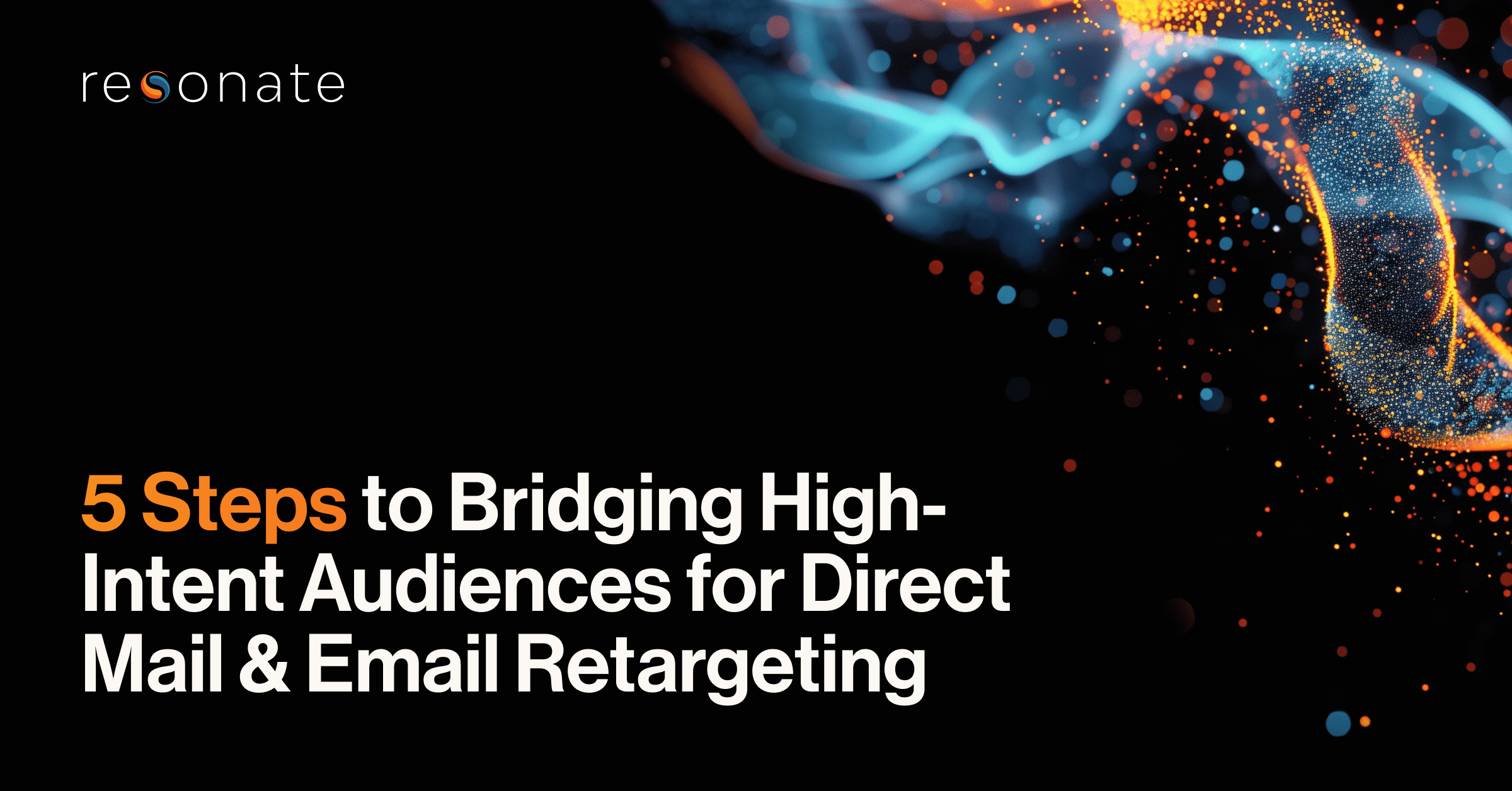In today’s omnichannel marketing landscape, effective customer engagement isn’t just about reaching the right person, it’s about reaching them in the right place, at the right time, and with the right message. One of the most powerful strategies modern marketers can deploy involves merging the strengths of offline and online targeting through high-intent audience segmentation, direct mail personalization, and integrated email campaigns. And in a world where attention is fleeting, building high-intent audiences and connecting across channels isn’t just a smart strategy, it’s a competitive advantage.
Below we cover a step-by-step framework for utilizing high-intent audiences, appending data, layering insights, and building a retargeting ecosystem to tie physical and digital touchpoints together and drive ROAS with more precision.
Step 1: Utilizing High Intent Audiences
High-engagement audiences are your foundation. These audiences are defined by high-intent signals: actions that suggest genuine interest, such as website visits, cart activity, content downloads, or even in-store visits.
Start by identifying your source systems: CDPs, CRMs, web analytics, and offline data sources. Once identified, ingest these audiences into your marketing engine. The goal is to capture:
- Behavioral signals (browsing activity, frequency, recency)
- First-party identifiers (emails, hashed emails (HEMs), phone numbers, mobile IDs)
- Engagement thresholds that indicate in-market to purchase or conversion intent
A high-intent audience should represent people who are ready to act—not just passive prospects.
Step 2: Appending and Enriching the Audience
Now that you’ve identified your high-intent audience and ingested those IDs, the next step is data appending, filling in the blanks.
This is where you enrich those records with missing details and identifiers. For example:
- Match emails to physical addresses using third-party identity resolution providers
- Append demographic, psychographic, or household data
- Tie device IDs and hashed emails to online and offline behaviors
The appended data becomes the connective tissue between your channels. Without it, your cross-channel efforts will stay siloed and inefficient.
Step 3: Layering for Precision
With appended data in hand, it’s time to layer insights for targeting accuracy. This step is critical to avoid sending irrelevant messaging.
Layer your high-intent audiences with:
- Purchase propensity scores
- LTV predictions
- Channel preference indicators
- Geographic and household data
- First-party engagement history
This ensures your outreach, whether through direct mail or email, is precise, relevant, and impactful. You’re not just casting a wide net; you’re fishing with a spear.
Step 4: Tying to Physical Address for Direct Mail
With intent and identity layered, the audience is now direct-mail-ready.
But this isn’t the old-school approach. Thanks to the precision of the previous steps, you can now deploy:
- Personalized direct mail that feels relevant and timely
- Re-targeting mail sends based on digital behavior (e.g., abandon cart > postcard within 48 hours)
- Sequenced messaging that complements email journeys
Direct mail becomes a performance channel, not just a branding exercise—especially when targeting high-intent segments that have shown recent activity.
Step 5: Connecting the Dots with Email & Retargeting
While direct mail anchors the physical experience, email retargeting complements it digitally. With the appended identifiers, you can orchestrate:
- Parallel email campaigns reinforcing the direct mail offer
- Dynamic creative testing across channels
- Real-time suppression and inclusion logic based on conversions
Better yet, this data can flow into DSPs, social platforms, and CTV ecosystems to retarget users across the web, extending the lifecycle beyond the mailbox or inbox.
This is what a retargeting ecosystem looks like: one where signals flow freely between offline and online, where direct mail drives urgency, and email reinforces it.
Talk to a Resonate Data Expert to learn more about utilizing high-intent audiences for your next campaign!



